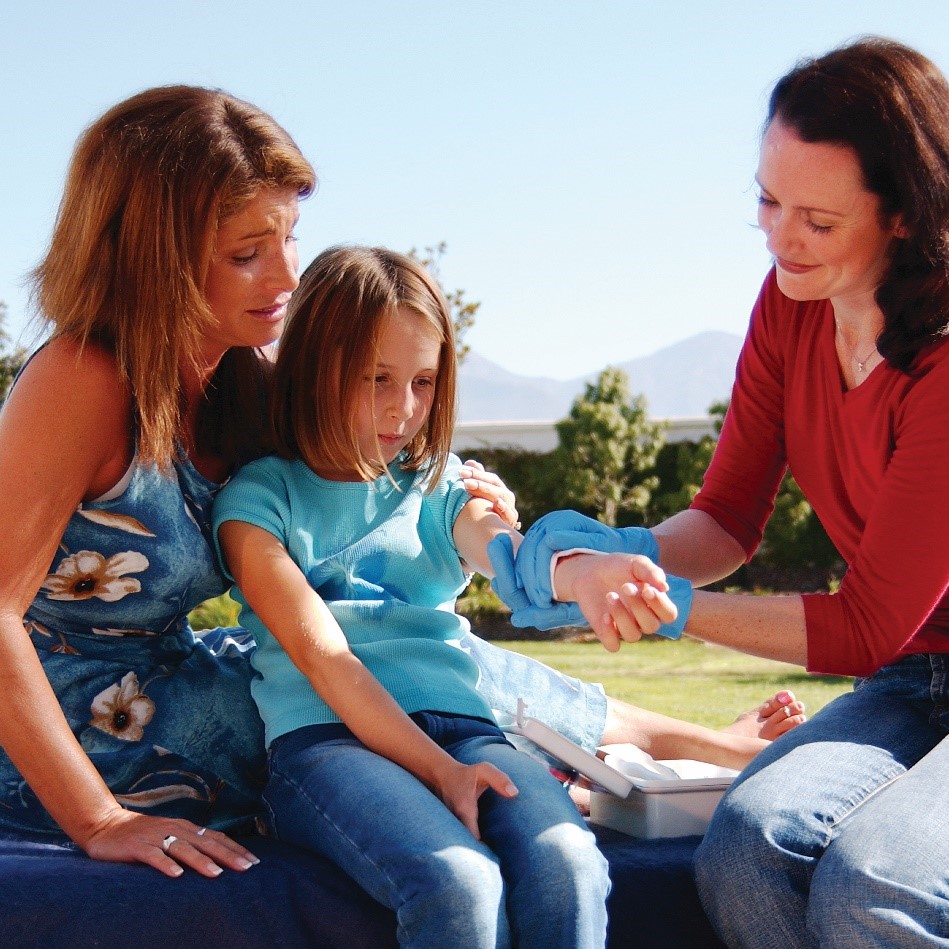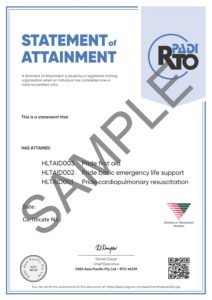How good are your basic first aid skills? Basic First Aid knowledge is a skill set that everyone should know. Medical emergencies can happen at any time, and most people can be completely unprepared for that moment. Be ready to response and even assist in saving a life when you master these 4 basic first aid skills.

Cardiopulmonary Resuscitation (CPR)
CPR or Cardiopulmonary Resuscitation is an emergency procedure used to save lives and is performed once the heart stops beating. It is a blend of methods including chest compression’s and rescue breaths designed to pump the heart, keeping blood circulating to deliver oxygen to the brain and other organs. This process is continued until additional treatment, such as an Automated External Defibrillator (AED) can stimulate the heart to restart. CPR should be at the core of every first aid administers arsenal, as when it is performed properly, can mean the difference between life and death for a casualty.
Allergic Reaction Response
An allergic reaction occurs when the body misidentifies foreign substances as harmful (even though they aren’t) and creates antibodies to fight it off. Allergens are different for each individual and can be anything from food to medication or environments (dust or seasonal allergies). For the majority of patients, allergic reactions consist of sneezing or skin irritation, however, some reactions can lead to severe anaphylaxis – a life threatening form of allergic reaction.
Symptoms of Severe Allergic Reactions include; wheezing or persistent cough, confusion, swelling or tightness in the throat, faintness or confusion and difficulty talking to name a few. When these symptoms are encountered the casualty should lie flat, an EpiPen should be administered and emergency medical services (EMS) should be called.

Bleeding Management
Casualties with blood related injuries are more often than not of a minor nature, such as cuts, scrapes and grazes, and in these cases, first aid is simply cleaning and covering the wound with pressure to stop blood flow. However, on occasion, you may be faced with the need for major, or severe bleeding management. Severe bleeding first aid involves calling EMS, lying the casualty down, having the casualty (or yourself) apply direct pressure to the wound using a sterile pad and applying a clean bandage. Correct management of blood related injuries may be able to prevent a casualty from going into shock or keep the casualty alive until EMS arrive, leading to survival or a shortened recovery time.

Suspected Head, Neck & Spinal Injury Management
Head, neck and spinal injuries can happen for any number reasons, ranging from a fall to a knock on the head. Head, neck and spinal injuries can be life altering, so symptoms including pain at or below the injury site, loss or impaired movement below the injury and loss or irregular feelings at the injury should always be treated as a suspected spinal injury. Suspected spinal injuries should be treated with extreme caution and care should be taken to ensure the head, neck and spine maintain aligned. Remember to call EMS (000) if a head neck or spinal injury is suspected.
Master these 4 Basic First Aid Skills and more by partaking in a PADI RTO First Aid Course. Select the first aid course that’s right for you, or contact a PADI RTO Trainer in your local area for more information.
Tags: Allergic Reaction Response, Bleeding Management, Cardiopulmonary Resuscitation (CPR), First Aid, First Aid Training, Head Neck Spinal Injury Management

